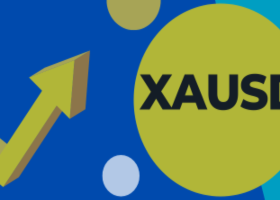
Mastering CADCHF Trading: Characteristics, Factors Affecting its Price, and Effective Trading Strategies
Trading currency pairs is a popular way to invest and potentially profit in the financial markets. The CADCHF is a currency pair that consists of the Canadian dollar (CAD) and the Swiss franc (CHF). In this article, we will discuss how to trade CADCHF, including its characteristics, factors that affect its price movements, and different trading strategies that traders can use.
Characteristics of CADCHF:
CADCHF is a minor currency pair that is not as heavily traded as major currency pairs such as EURUSD, GBPUSD, or USDJPY. It is quoted to four decimal places and has relatively low volatility compared to other currency pairs. This means that the price movements of CADCHF are generally more stable, which can make it an attractive option for traders looking to avoid sudden price fluctuations.
Factors That Affect CADCHF:
Like all currency pairs, the CADCHF exchange rate is influenced by a range of economic, political, and social factors. Some of the key factors that can affect the price of CADCHF include:
-
Interest rates: Changes in interest rates set by the central banks of Canada and Switzerland can affect the demand for their respective currencies, which can then impact the exchange rate of CADCHF.
-
Economic data releases: Economic data such as Gross Domestic Product (GDP), inflation, and employment figures can affect the exchange rate of CADCHF. For example, if Canadian GDP grows faster than expected, this can cause the CAD to appreciate against the CHF.
-
Political events: Political events such as elections, referendums, and trade agreements can have an impact on the exchange rate of CADCHF. For instance, if Canada and Switzerland sign a new trade agreement, this could increase demand for both currencies and cause the exchange rate to appreciate.
-
Market sentiment: The overall sentiment of the forex market can also impact the exchange rate of CADCHF. For example, if there is increased demand for safe-haven currencies such as the CHF due to global economic uncertainty, this can cause the CHF to appreciate against the CAD.
Trading Strategies for CADCHF:
Now that we have discussed the characteristics of CADCHF and the factors that can affect its price movements, let's explore some trading strategies that traders can use to trade this currency pair.
-
Trend following: This strategy involves identifying the direction of the trend and then taking positions that follow the trend. Traders can use technical analysis tools such as moving averages, trend lines, and indicators to identify trends in the CADCHF exchange rate. For example, if the CADCHF exchange rate is trending higher, traders can go long on the pair.
-
Breakout trading: This strategy involves taking positions when the exchange rate breaks out of a range or consolidation pattern. Traders can use support and resistance levels, chart patterns, and other technical analysis tools to identify potential breakout opportunities. For example, if the CADCHF exchange rate breaks above a key resistance level, traders can go long on the pair.
-
News trading: This strategy involves taking positions based on economic news releases and other fundamental factors that can affect the exchange rate of CADCHF. Traders can use economic calendars to keep track of upcoming news releases and then take positions based on the expected impact of the news on the exchange rate. For example, if the Bank of Canada raises interest rates, traders can go long on the CADCHF pair.
-
Range trading: This strategy involves taking positions when the exchange rate is trading within a range or consolidation pattern. Traders can use support and resistance levels, chart patterns, and other technical analysis tools to identify potential range trading opportunities. For example, if the CADCHF exchange rate is trading within a narrow range, traders can go long on the pair when the price is near the support level and go short when the price is near the resistance level.
- Carry trading: This strategy involves taking advantage of the interest rate differential between the two currencies in the pair. Traders can go long on the currency with the higher interest rate and short the currency with the lower interest rate to profit from the interest rate differential. For example, if the interest rate in Canada is higher than Switzerland, traders can go long on CADCHF and hold the position to earn interest.
Risk Management:
As with all types of trading, risk management is crucial when trading CADCHF. Here are some tips to help manage risk when trading this currency pair:
-
Use stop-loss orders: Set a stop-loss order to automatically exit a losing trade at a predetermined price level. This can help limit potential losses and protect your trading capital.
-
Use proper position sizing: Determine the appropriate position size for each trade based on your risk tolerance and the size of your trading account. Avoid risking too much on a single trade, as this can lead to significant losses.
-
Use leverage wisely: Leverage can amplify both profits and losses, so use it wisely. Avoid overleveraging your trades, as this can quickly wipe out your trading account.
-
Keep an eye on market news: Stay up-to-date on economic news and events that can impact the exchange rate of CADCHF. This can help you make informed trading decisions and avoid unexpected losses.
Conclusion:
Trading CADCHF can offer traders opportunities to profit from the movements of the exchange rate between the Canadian dollar and the Swiss franc. By understanding the characteristics of the pair and the factors that can impact its price movements, traders can use various trading strategies to potentially earn profits. However, it's important to remember that trading always involves risk, so traders should use proper risk management techniques to protect their trading capital.


